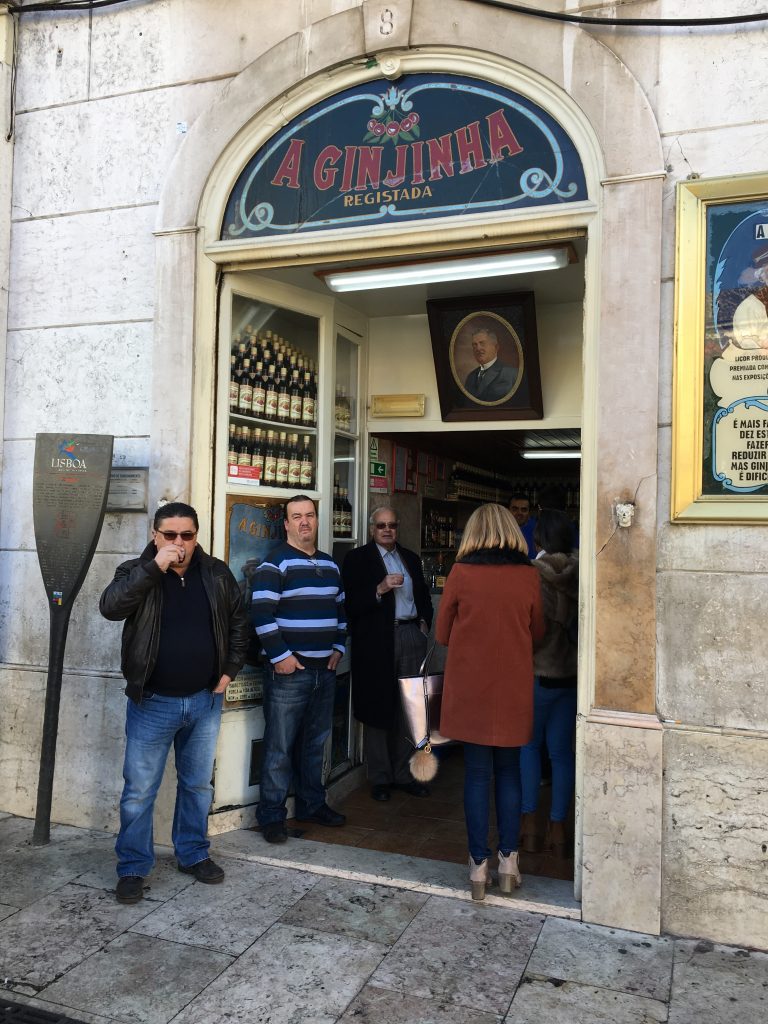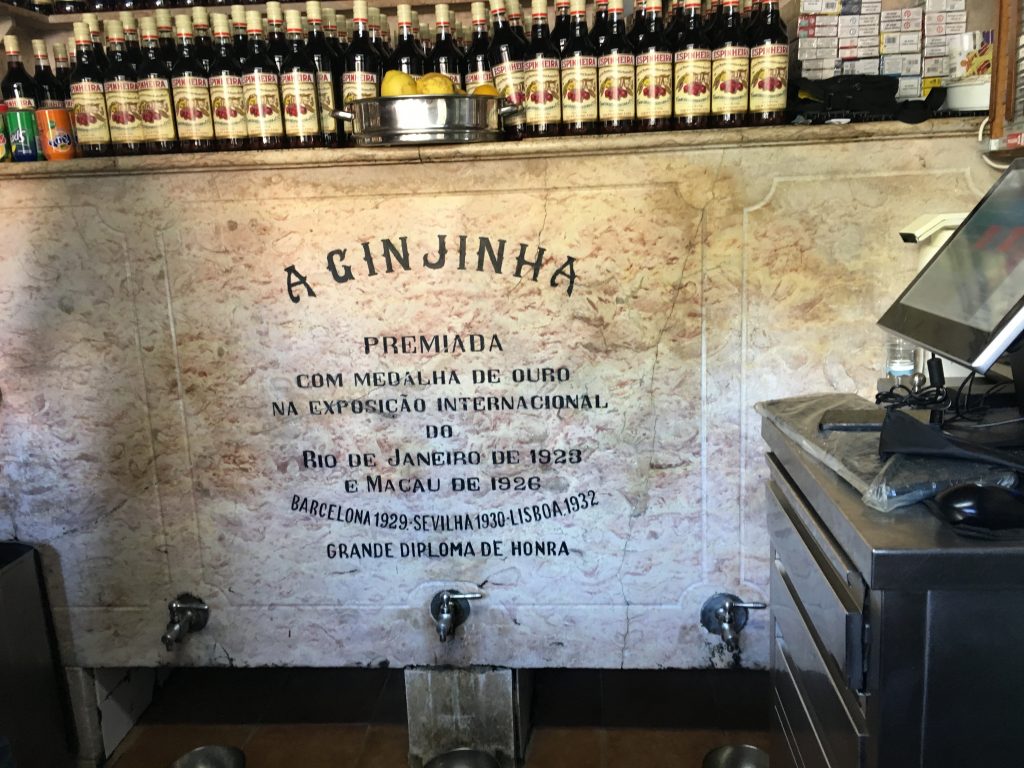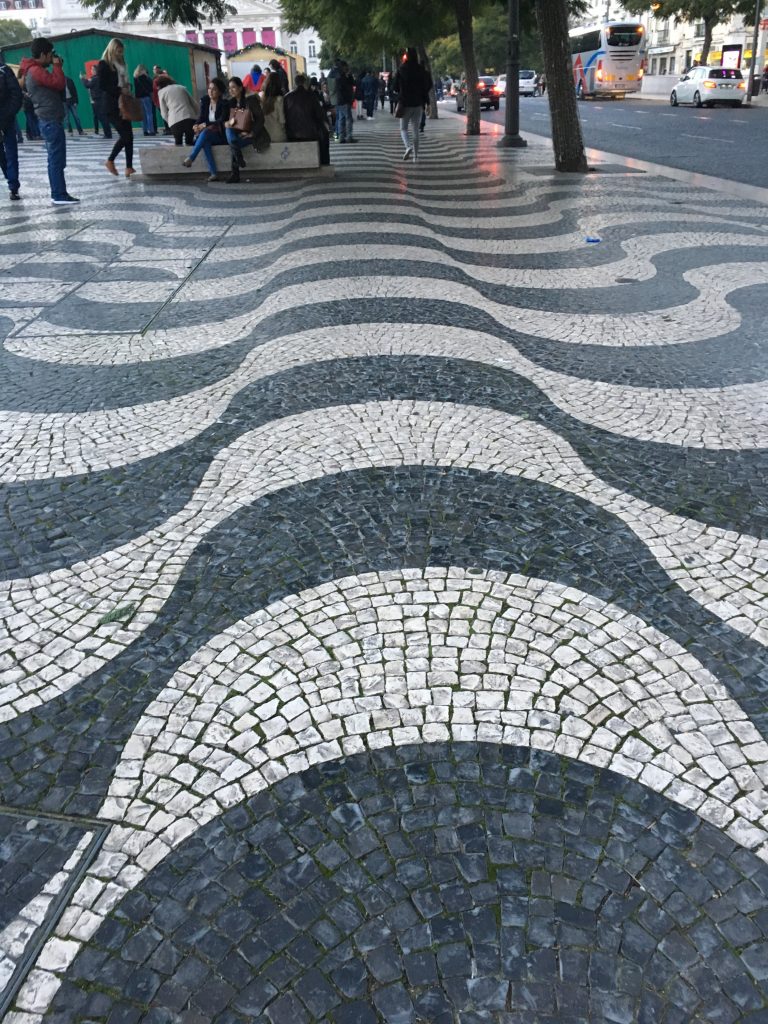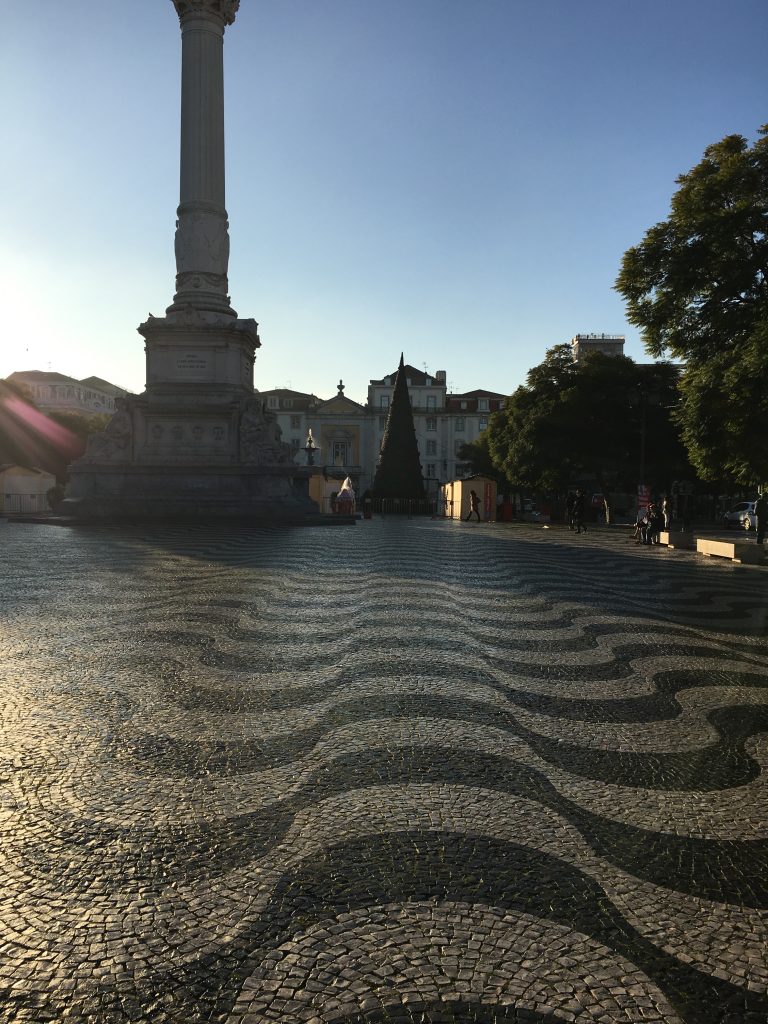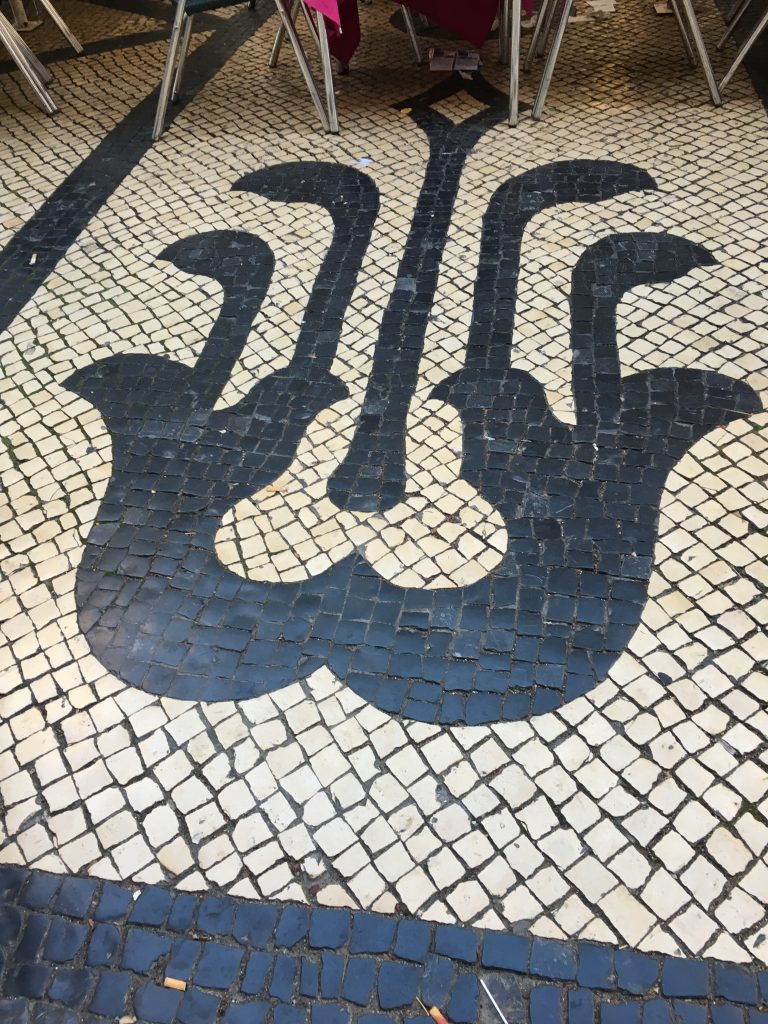The Cultural Mosaic of Lisbon
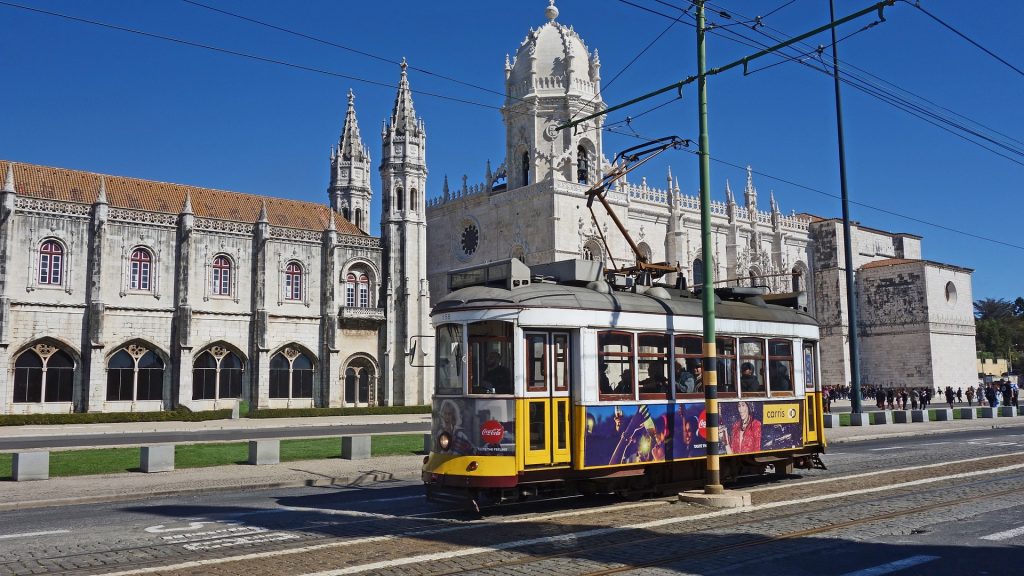
Portugal lies in the southwest corner of Europe on the Iberian peninsula. Its mostly Mediterranean climate, flavorful cuisine, and the charm and friendliness of its people make it a place to visit again and again. As we dream of the days when we can travel again, I am treasuring my memories from its capital city.
A taste of Lisbon
One of the not to be missed experiences of Lisbon is a shot of the Ginjinha liqueur.
Put it on the top of your list and do it ASAP! Because you will keep wanting to return for more.
Ginja, or Ginjinha as most people call it, is a liqueur made from the cherry-like Ginja berry. The berries are fermented into a sweet brandy, a touch bitter, and a bit sticky, but totally mmmm!
The drink is very popular and is offered at all restaurants, big or small, whether it is a picturesque cafe outside the 12th century Castelo de Sao Jorge or a tiny bar barely accommodating three patrons.
Take an Undiscovered Lisbon Food Tour
One very popular place to try it is in the heart of downtown. The liqueur is stored in a rectangular vat with a tap similar to that of a water faucet. The single bartender has four or five plastic water jugs, filled with Ginjinha waiting to be poured. Patrons step in the small place to place their orders. They pay slightly over one euro and step out into the street with a shot glass of the dark brown, tinged with red, liqueur.
You sip the liqueur standing in the street, as others around you do the same, chatting or by themselves. Finish it and be on your way. At any time of day, there are as many tourists as Lisboans enjoying Ginjinha.
It’s super fun to start your sightseeing with a fortifying shot of the Ginja.
Nautical Powerhouse
In the 15th century, Portugal explored sea routes to India, which held a monopoly in the lucrative spice trade. Under the patronage of Henry (the navigator), a prince of the royal house, Portuguese ships rounded Africa and sailed into the Indian Ocean and onto India. Portugal established trade routes and some colonies in India and other countries. Brazil was discovered in the 1500s and became Portugal’s richest colony. Even today, both countries speak the same language — Portuguese.
Echoes of Portugal’s nautical past are immortalized in the streets of Lisbon and other Portuguese cities. The Dom Pedro IV Square, locally known as Rossio Square, is the starting point of the city’s main promenade. Rossio Square is paved with mosaic tiles. At first glance, it may appear as black and white mosaic tiles, but as you look ahead you notice a wavy pattern. One has to blink to make sure that one’s eyes are seeing correctly. The pattern represents the waves of the ocean.
In other cities, like Faro on Portugal’s southern tip, main promenades have mosaics of different sea creatures like lobsters and crabs.
The ocean is deeply connected to Portuguese life. Seafood is a major part of the cuisine. Sea creatures are a prominent motif on the many products available for sale.
Among its more traditional industries, Portugal is famous for linen and ceramic tiles and ceramic wares.
Exquisite tile work on the outer facades of buildings is visibly evident in older buildings in Lisbon, especially in the Alfama district. The front of many older buildings — whether it is a four-five story office building or a mansion — are decorated with azulejos, glazed ceramic tiles. Even a modest apartment will have intricately decorated ceramic tiles around its street-facing windows.
Enjoy Lisbon on this Sunset Sailing Tour with Wine and Snacks
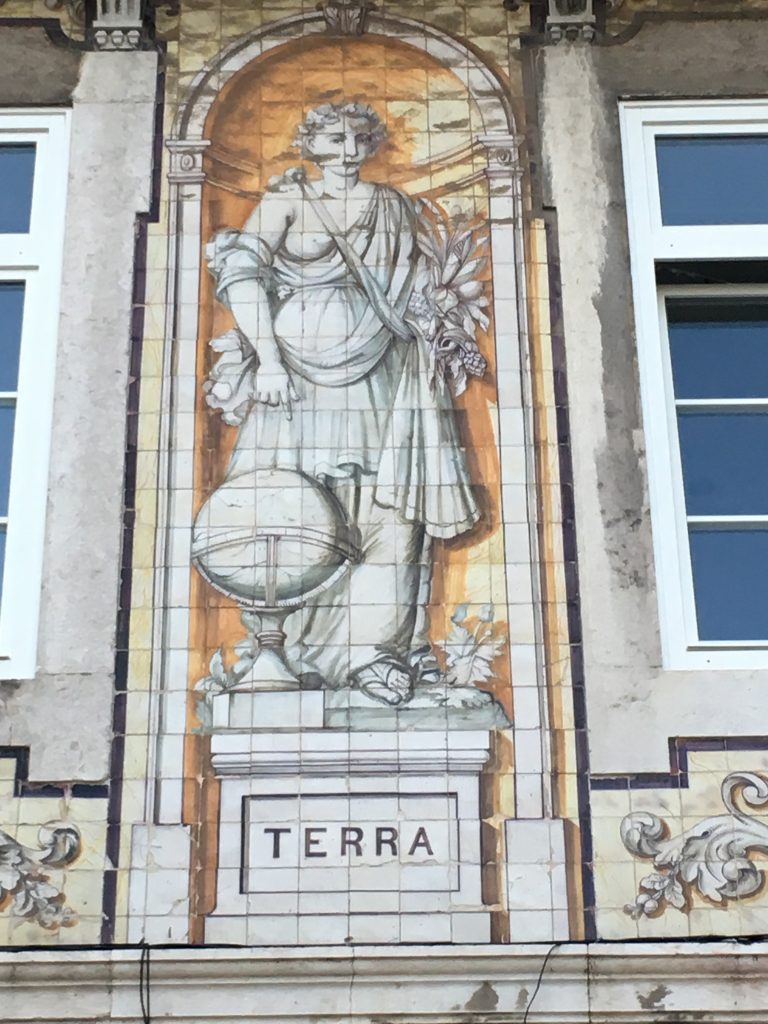
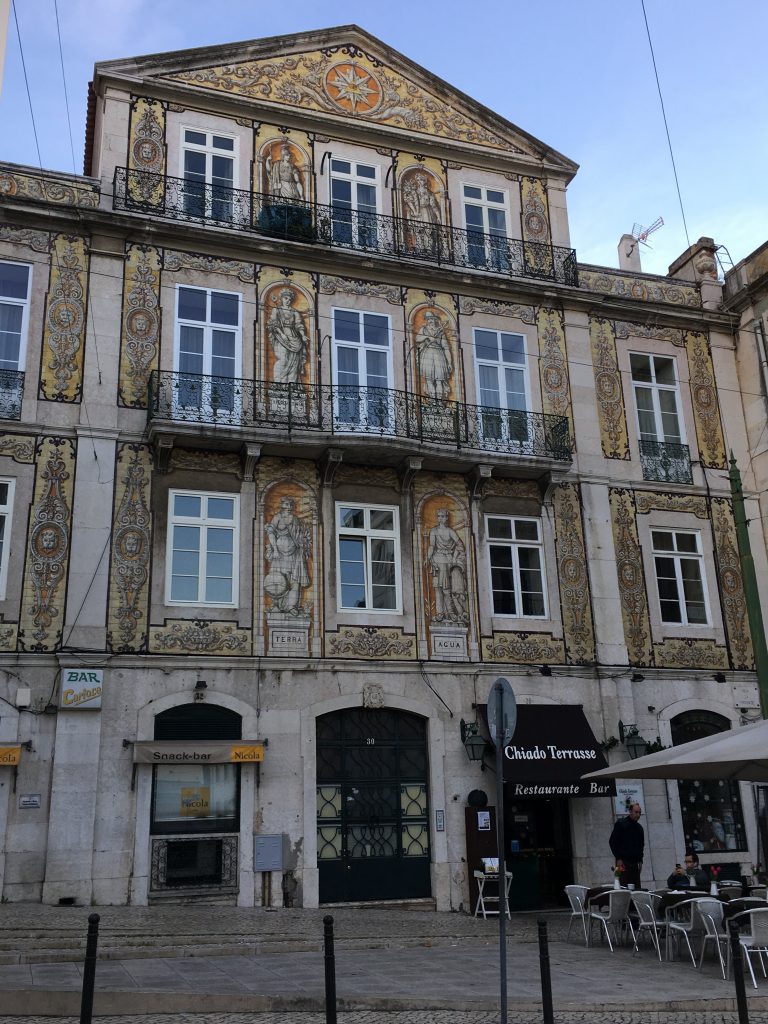
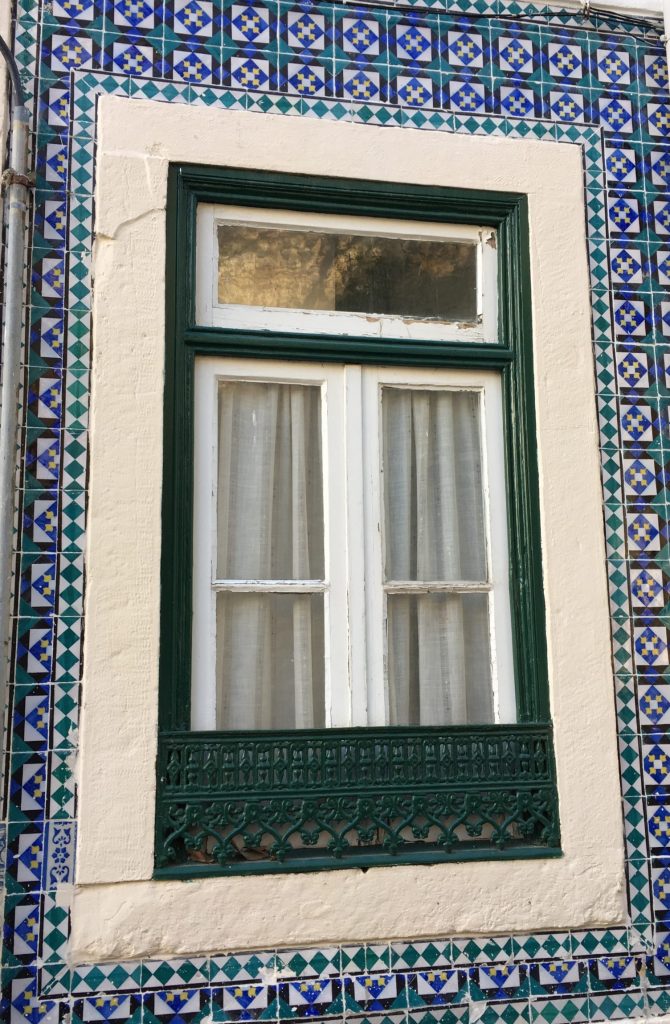
If you are interested in creations from clay, glazing and kilns, a visit to Lisbon’s National Tile Museum will be an educational experience.
As you take in the sights around Lisbon, include the tram in your must-do list. Lisbon is a city built on several hills. The older areas are very narrow with barely enough room for two cars to pass side by side. The best way to travel these roads is to walk carefully along the sides or hop onto one of Lisbon’s famous trams. This way, you can safely take in the scenery and admire the architecture and other sights. At its peak in the early 1900s, there were 27 trams. Though only six routes exist now, they are still used by locals and are a memorable tourist experience.
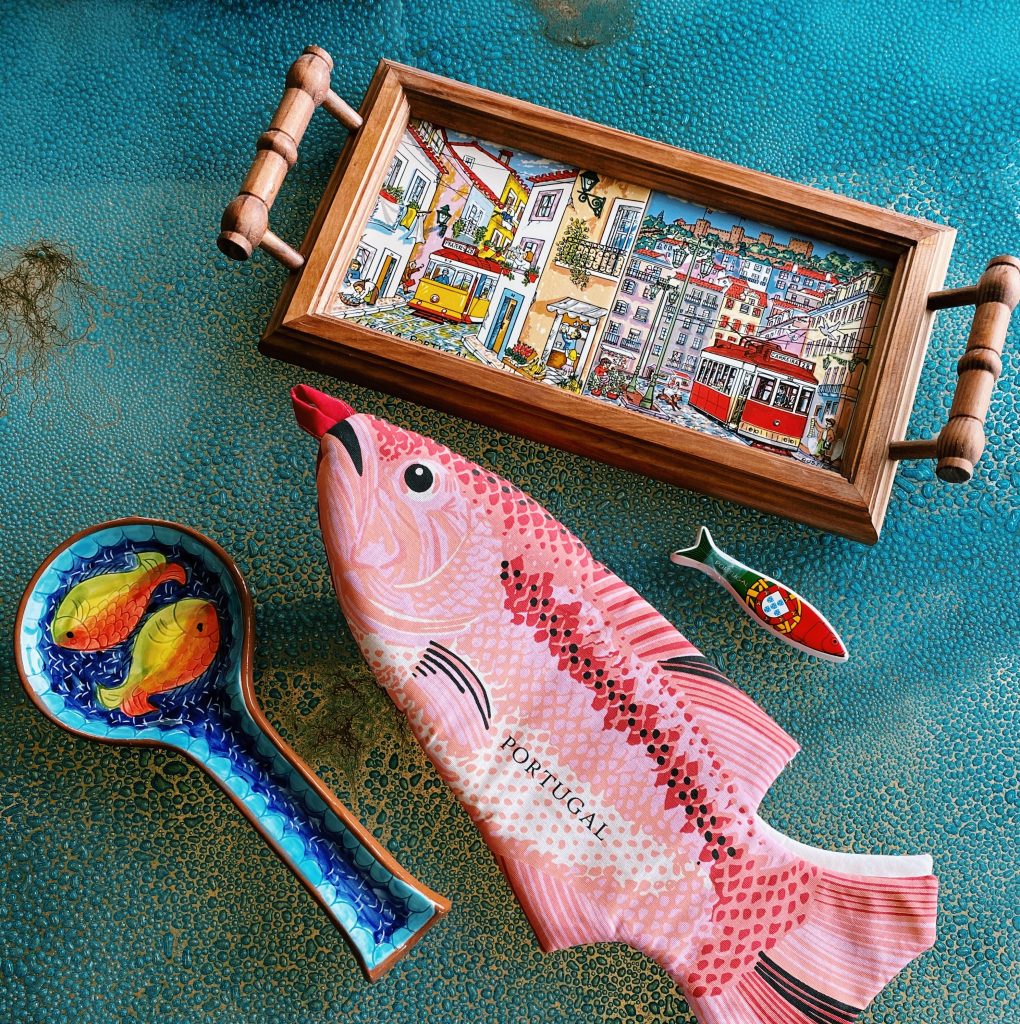
Avenida Palace Hotel
The Avenida Palace Hotel in downtown Lisbon, next to the Rossio station and across from Rossio Square, bills itself as the only palace in the center of Lisbon. The hotel opened its doors in 1892 and was built by Jose Luis Monteiro, Lisbon’s celebrated architect who also designed the Rossio station, Lisbon’s main railway station near the hotel.
The Avenida Palace has witnessed major historical events over the centuries, notably Portugal becoming a Republic, the Spanish Civil War, and the two World Wars.
Famous personalities have stayed under its roof and even today the hotel continues to attract performing artists from around the world.
The hotel has refurbished itself periodically and maintained its palatial feel. This is more visible in its many rooms that can be used for conferences or special celebrations. In these rooms, the walls are lined with silk and adorned with beautiful original landscape paintings. Plush sofas and cut glass chandeliers with candles replaced with electric lights recreate the original atmosphere of the era in which the hotel was built.
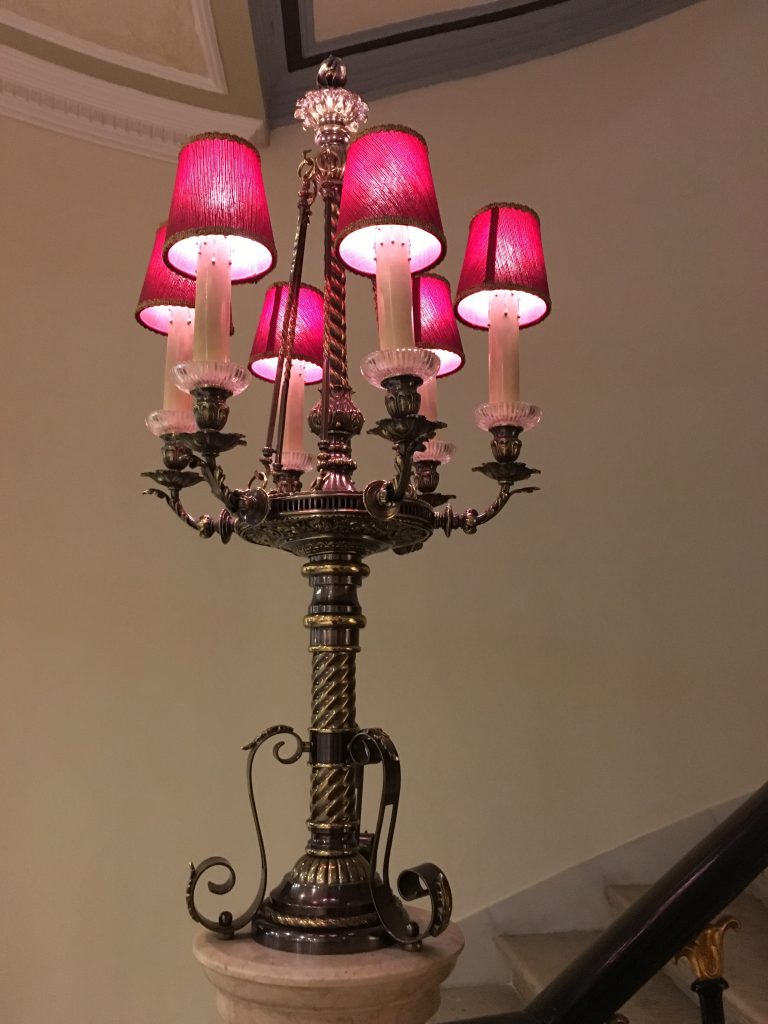
Attention to detail is evident in the basic construction of the hotel also. Of course, there are elevators in the hotel but the stairs still exist and can be used to access the rooms. The staircase when viewed from the top floors show the intricate design engraved on the sides, carved metal railings, and decorative pictures. On every floor, there is a nice painting or an elegant flower arrangement which enhances the glamor quotient.
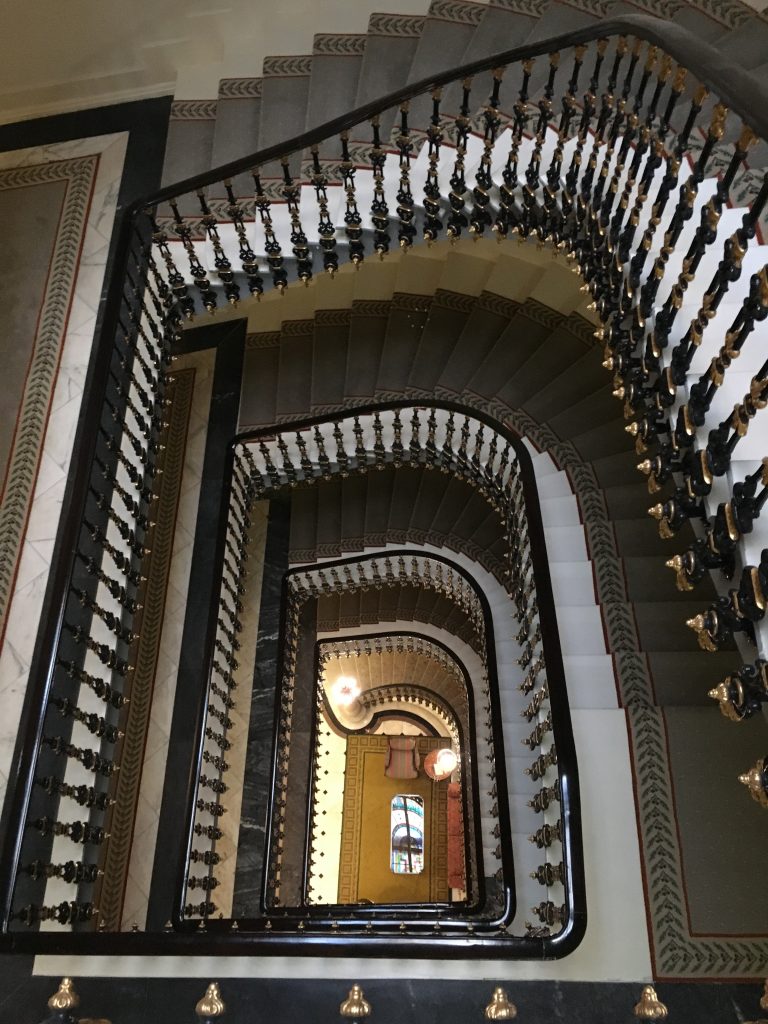
Bright, comfortable, plush chairs are available on every floor to rest or quietly contemplate the hotel’s grandeur. The center of the main lobby has soaring columns with decorated cornices, conveying hushed elegance and echoes of bygone eras.
The rooms themselves have bright-colored bed coverings with matching wallpaper, in a style reminiscent of the mid-twentieth century. The closets are wooden cabinets with extra drawers for small personal items. There’s an old-world opulence and elegance to every action. When the room is turned down in the evenings, there is a linen cloth in front of the bed so your feet are not soiled when getting into bed. And there is a nice treat waiting in the rooms. A bottle of port or a bowl of grapes covered in a linen napkin. On Christmas Day one would be treated to a traditional Bolo Rei, Portuguese King cake — brioche type bread studded with dried candy, dried fruit, and nuts.
My memories of Lisbon are indelible with historical sites, the hotel, city architecture, and landscape. Of course, not to forget Ginjinha liqueur.
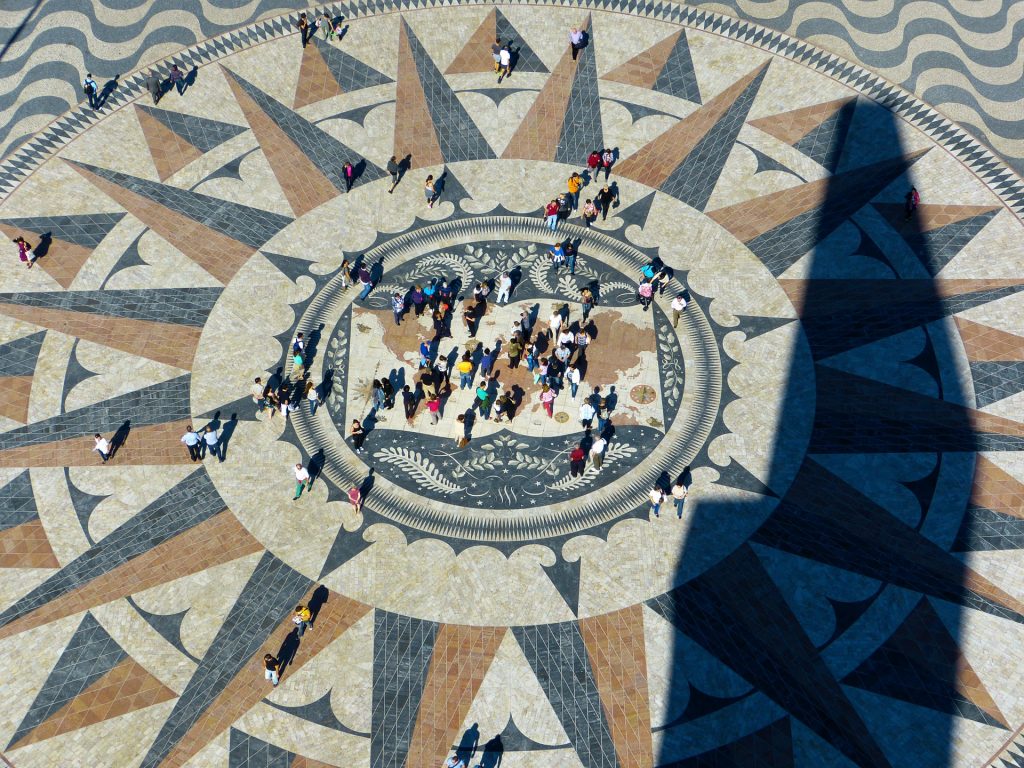
Book Your Stay Now in Lisbon, Portugal
Use an interactive map below to search, compare and book hotels & rentals at the best prices that are sourced from major booking sites like Booking.com, Hotels.com, Expedia, Vrbo, and more. You can move the map to search for accommodations in other areas and also use the filter to find restaurants, purchase tickets for tours and attractions, and locate interesting points of interest!


Manali Shah is a freelance writer who is always dreaming of her next trip. Traveling, watching Bollywood movies and reading murder mysteries are her favorite pastimes.
She lives in Minnesota and has been actively volunteering on several school district committees and other organizations in her city since 2004. Manali is a Board member of Woodbury Days–a three-day Fun Fair held in August every year–where she leads the event’s fundraising efforts and participants in it’s year-round planning.
Manali was a correspondent for Business India magazine and The Economic Times in Mumbai, India, from 1989 to 1994. She continued as a freelance business writer for some years when she moved to the USA, and now writes travel memoirs.
